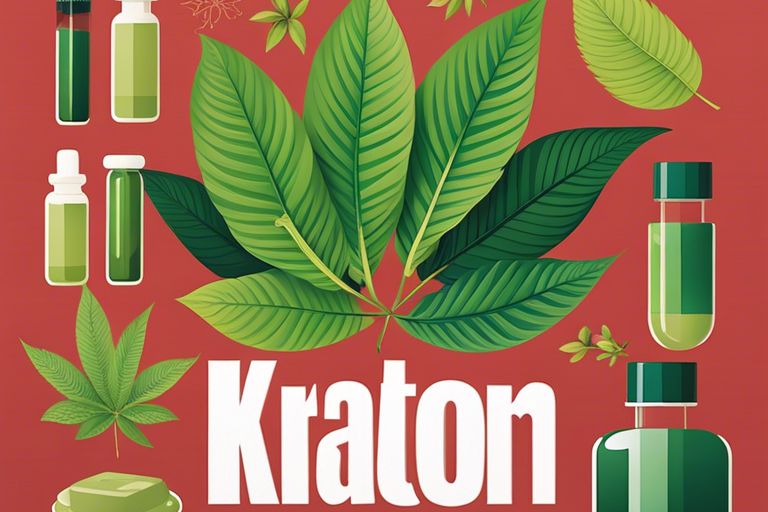The Ultimate Guide to Kratom and Why You Should Care
Are you familiar with kratom? If not, you should be. Kratom is a tropical tree native to Southeast Asia, and it has gained popularity in the Western world for its potential health benefits. However, with this popularity comes controversy and concern, as kratom has also been linked to dangers and potential risks. In this comprehensive guide, we will delve into the world of kratom, exploring its history, uses, effects, and the reasons why you should pay attention to this powerful botanical substance. Kratom has garnered attention for its supposed ability to relieve pain, increase energy, and alleviate anxiety and depression. However, it also carries the risk of addiction, dependence, and even potential overdose. With the growing popularity of kratom products, it has become crucial for individuals to be informed about its effects and potential risks. Whether you are a seasoned kratom enthusiast or someone who has never heard of it before, this guide will provide you with the comprehensive knowledge needed to understand kratom and make informed decisions about its use.
Key Takeaways:
- Kratom is a natural herb: Kratom is derived from the leaves of the Mitragyna speciosa tree, a tropical evergreen in the coffee family.
- Traditional use in Southeast Asia: Kratom has been used for centuries in Southeast Asia for its stimulant and pain-relieving effects.
- Controversy and legal status: Kratom’s legality and potential for abuse have led to controversy and varied legal status in different countries.
- Potential benefits and risks: Kratom may offer pain relief, mood enhancement, and energy, but it also carries potential risks such as addiction and dependence.
- Forms of consumption: Kratom is consumed in various forms, including powder, capsules, and extracts, and can be brewed as a tea.
- Regulation and safety: Due to its potential risks, it’s important to buy from reputable sources and be aware of potential interactions with other medications.
- Research and knowledge: As interest in Kratom grows, more research is needed to better understand its effects, risks, and potential benefits.

Understanding the Basics
One of the most important steps in learning about kratom is understanding its basics. From its origins to the science behind how it works, delving into the fundamentals of kratom is crucial in comprehending its significance.
The Origin of Kratom
On its surface, kratom appears as a tropical evergreen tree native to Southeast Asia, particularly in the regions of Thailand, Indonesia, and Malaysia. The leaves of the kratom tree have been traditionally used by locals for centuries, either by chewing them raw or brewing them into tea, for their various medicinal properties. This has made the plant an integral part of the cultural and social fabric of these regions.
With globalization, kratom has gained attention beyond its native regions, and its popularity has surged, leading to a wider understanding and usage of the plant, both for recreational and medicinal purposes.
How Kratom Works: The Science Behind It
With the recent surge in interest surrounding kratom, there has been an increased focus on understanding how it works. The active compounds in kratom, mitragynine and 7-hydroxymitragynine, are known to interact with the opioid receptors in the brain, albeit in a different manner compared to traditional opioids. This interaction leads to varying effects, such as pain relief, energy, and mood enhancement.
Plus, kratom affects other neurotransmitter systems, including serotonin and dopamine, contributing to its complex pharmacological profile.

Types of Kratom
Unlike other herbal supplements, kratom comes in various types with different properties and effects. It is crucial to understand the distinctions between the types of kratom to determine the best fit for your needs. Here are the main types of kratom:
- Bali kratom
- Maeng Da kratom
- Thai kratom
- Borneo kratom
- Malay kratom
After understanding the differences in the types of kratom, it becomes easier to choose the one that aligns with your desired effects. Importantly, it is essential to research and consult with a professional before experimenting with any type of kratom.
Strains and Vein Colors
Kratom comes in different strains, such as Bali, Maeng Da, and Thai, which are determined by their place of origin. Additionally, kratom is distinguished by the vein colors – red, green, and white. Each strain and vein color produces unique effects, making it crucial to understand the differences and choose accordingly to achieve the desired results.
Forms of Kratom Available
Vein colors determine the forms of kratom available, such as capsules, powder, and extracts. Each form has its advantages, and the choice depends on individual preferences and convenience. It is essential to consider the potency and onset of effects when selecting the preferred form of kratom.
Available in various forms, kratom provides a versatile option for consumers to incorporate it into their wellness routines. The availability of capsules, powder, and extracts caters to different preferences, ensuring that individuals can choose the most suitable form for their kratom consumption.
How to Choose the Right Kratom
Not all kratom is created equal, and it’s essential to consider several factors before making a selection. With so many options available, finding the right kratom for your needs can be overwhelming. This guide will help you navigate the selection process and make an informed decision.
Factors to Consider
When choosing the right kratom, there are several essential factors to consider:
- Strain: Different strains of kratom offer varied effects, so it’s crucial to determine which strain is best suited for your needs.
- Potency: The potency of kratom can vary widely, and it’s important to select a potency level that aligns with your tolerance and desired effects.
- Form: Kratom is available in various forms, such as powder, capsules, and extracts. Consider which form is most convenient for your consumption.
Assume that each factor plays a crucial role in the overall experience and effects of the kratom you choose.
A Step-by-Step Guide to Selecting Your Kratom
Your kratom selection process can be simplified by following a step-by-step guide:
| Step 1: Research Different Kratom Strains | Step 2: Determine the Desired Potency Level |
| Step 3: Decide on the Preferred Form of Kratom | Step 4: Verify the Quality and Source |
For instance, researching different kratom strains will provide insight into their unique effects and benefits, aiding in your decision-making process. By following these steps, you can ensure that you select the most suitable kratom for your specific needs.
Tips for Using Kratom Effectively
After purchasing high-quality kratom from a reputable source, there are several tips to keep in mind for effective use. First and foremost, it’s crucial to start with a low dosage and gradually increase as needed. This approach allows the body to acclimate to the effects and helps to avoid potential adverse reactions. It’s also important to rotate between different strains to prevent tolerance buildup and maintain the herb’s effectiveness over time.
Recognizing the health benefits of kratom can be crucial for understanding its effective use. From pain relief to increased energy, being aware of the potential positive outcomes can help users optimize their experience while using kratom responsibly. For more information on the Health Benefits of Kratom, click here.
Best Practices for Beginners
An essential tip for beginners is to educate themselves about the different strains and their respective effects. This knowledge allows users to select the most suitable strain for their specific needs. Additionally, maintaining a dosage journal can help track the effects of kratom and adjust usage accordingly. This mindful approach is key to establishing a safe and effective routine.
Maximizing Benefits While Minimizing Risks
Maximizing the benefits of kratom involves being mindful of potential risks. It’s crucial to be aware of the potential side effects and interactions with other substances. Additionally, using kratom responsibly means avoiding excessive daily use to prevent tolerance buildup and dependence. A comprehensive understanding of the herb’s properties is essential for maximizing its positive effects while minimizing potential risks.
A balanced approach to using kratom involves being mindful of individual sensitivity levels and maintaining a healthy lifestyle. Incorporating regular exercise, a balanced diet, and mindfulness practices can contribute to an overall positive experience while using kratom.
Incorporating Kratom into Your Routine Responsibly
The benefits of incorporating kratom into a daily routine include potential relief from discomfort and an overall improved quality of life. It’s important to remember that kratom should complement a healthy lifestyle and not serve as a sole solution. Seeking guidance from a healthcare professional and staying informed about the legal status of kratom in your region is essential for maintaining responsible usage.
The Pros and Cons of Kratom
Now, let’s take a closer look at the pros and cons of using kratom. It’s important to understand both the potential benefits and risks associated with this herbal substance before considering its use. Below are the key points to consider when weighing the advantages and drawbacks of kratom.
| Pros | Cons |
| Potential pain relief | Risk of dependence and addiction |
| Improved mood and relaxation | Possible side effects such as nausea and constipation |
| Increased energy and focus | Regulatory uncertainty and legality issues |
| Relief from anxiety and stress | Potential for adverse interactions with other substances |
| Alternative to opioid medications | Lack of standardized dosing and quality control |
The Benefits: From Pain Relief to Energy Boost
On the positive side, kratom has been reported to provide relief from chronic pain, making it a potential alternative to traditional pain medications. Additionally, users have claimed improved mood and relaxation, as well as an increase in energy and focus after consuming kratom products.
Potential Downsides and Risks
For individuals considering the use of kratom, it’s essential to be aware of the potential downsides and risks associated with its consumption. While some users experience positive effects, others may face the risk of dependence and addiction, as well as possible side effects such as nausea and constipation.
For instance, regulatory uncertainty and legality issues surrounding kratom can lead to challenges in accessing reliable and high-quality products. Furthermore, the lack of standardized dosing and quality control can pose health risks for individuals using kratom.
Frequently Asked Questions
To fully understand kratom, it’s important to address common concerns and myths regularly associated with its use. Additionally, gaining insight from experts in the field can help navigate the complex landscape of kratom consumption.
Addressing Common Concerns and Myths
An integral part of understanding kratom is separating fact from fiction. There are many misconceptions surrounding kratom, such as its legal status, potential side effects, and addictive properties. However, studies have shown that when used responsibly, kratom can provide numerous benefits with minimal risk. It’s crucial to debunk these myths and focus on accurate information to make informed decisions regarding kratom consumption.
Expert Insights on Navigating the Kratom Landscape
For those interested in incorporating kratom into their wellness routine, seeking guidance from experts offers invaluable insights. Experts can provide knowledge on dosage, strains, and potential interactions with other substances. By tapping into the expertise of established professionals, individuals can navigate the kratom landscape with confidence and make well-informed choices for their well-being.
Myths surrounding the use of kratom can create trepidation among individuals considering its consumption. However, with guidance from experts, these misconceptions can be dispelled, allowing for an informed and safe approach to incorporating kratom into one’s lifestyle.

Beyond the Basics
Keep delving into the world of kratom, and you’ll find a wealth of advanced topics that can take your understanding to the next level. From extraction methods to potentiate effects, there’s much to explore beyond the basic knowledge of this remarkable plant.
Advanced Kratom Topics
An in-depth understanding of advanced kratom topics can add depth to your knowledge. Here are a few essential areas to explore:
- Extraction Methods: Understanding the different extraction methods can help you extract the most potent and pure compounds from kratom leaves.
- Potentiation Techniques: Learning how to potentiate kratom’s effects can enhance the benefits while reducing the potential for tolerance buildup.
The Global Kratom Community
Any serious kratom enthusiast should be aware of the global kratom community. This network of individuals and organizations is vital in promoting education, advocacy, and responsible use of kratom.
Kratom has gained popularity worldwide, and the global kratom community plays a crucial role in sharing information, fostering research, and advocating for the legal and safe consumption of kratom. Engagement with this community can be invaluable for anyone seeking a well-rounded kratom experience.
FAQ
Q: What is Kratom?
A: Kratom is a tropical tree native to Southeast Asia. Its leaves contain compounds that have psychotropic (mind-altering) effects.
Q: How is Kratom used?
A: In its native region, people chew the fresh leaves of the Kratom tree or brew them into tea. In other parts of the world, it is commonly consumed in the form of capsules or powder.
Q: What are the effects of Kratom?
A: Kratom can produce stimulant effects at low doses and sedative effects at higher doses. It has also been used for managing chronic pain and for opioid withdrawal symptoms.
Q: Is Kratom safe?
A: While Kratom is legal in many places, its safety is a subject of debate. Long-term use can lead to dependence and withdrawal symptoms. There are also risks of adverse effects, including psychosis and liver damage.
Q: Can Kratom be addictive?
A: Yes, Kratom has the potential for addiction and abuse, especially when used regularly in high doses. It acts on the same brain receptors as opioids and can lead to physical dependence.
Q: Is Kratom legal?
A: The legal status of Kratom varies by country and state. In some places, it is classified as a controlled substance, while in others, it is legal but regulated. It is important to check local laws before using Kratom.
Q: Should I use Kratom?
A: The decision to use Kratom should be made carefully after weighing the potential benefits against the risks. It is essential to research thoroughly, consult healthcare professionals, and consider individual health conditions before using Kratom.
To wrap up
Conclusively, it’s clear that Kratom is a complex and controversial plant with potential benefits and risks for those who choose to use it. As we’ve explored in this ultimate guide, understanding the history, science, and legal status of Kratom is important for anyone who seeks to make informed decisions about its use. Whether you’re a healthcare professional, a policy maker, or an individual considering Kratom as a supplement, the more you know about this plant, the better equipped you’ll be to navigate the ongoing debates and regulations surrounding it. For more detailed information about Kratom’s potential adverse effects and patterns of use, you can refer to the Kratom Fact Sheet for Healthcare Professionals to stay updated on the latest findings and recommendations.
So why should you care about Kratom? The answer lies in the nuanced perspectives and ongoing research surrounding its safety and efficacy. By staying informed about Kratom, you can contribute to a more comprehensive understanding of this plant’s impact on public health and safety. Whether you’re exploring the potential benefits of Kratom as a natural remedy or advocating for regulatory measures to address its potential risks, taking a proactive stance on understanding Kratom is essential for shaping the public discourse and policy decisions concerning this complex botanical substance.
